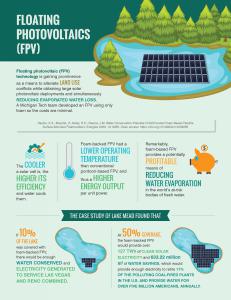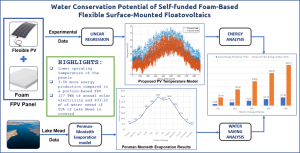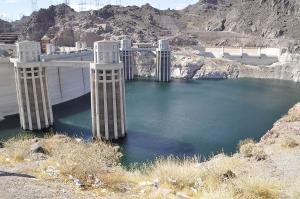Engineering Study: floating solar panels could help save the west from the heat
By:
EIN Presswire
July 01, 2021 at 10:58 AM EDT
How floating solar cells on what is left of Lake Mead could prevent enough evaporation to provide water for 5 million Americans/year.
Foam-backed floating photovoltaic systems would provide enough water savings on Lake Mead alone to provide for over five million Americans, annually.”
LAKE MEAD, NEVADA, USA, July 1, 2021 /EINPresswire.com/ -- Massive water shortage in Colorado River threatens entire region during what could become a normal heat wave. A new study shows a profitable solution to the coupled water-energy-food challenges is the concept of floating photovoltaics or floatovoltaics (FPV).— Prof. Joshua Pearce
Engineers completed a recent study on a new approach to FPV using a flexible crystalline silicon-based photovoltaic module backed with foam, which is less expensive than conventional pontoon-based FPV. The results show that the foam-backed FPV had a lower operating temperature than conventional pontoon-based FPV, and thus a 3.5% higher energy output per unit power. Therefore, foam-based FPV provides a potentially profitable means of reducing water evaporation in the world's at-risk bodies of fresh water. We did a specific case study of Lake Mead.
This novel form of FPV is tested experimentally for operating temperature and performance and is analyzed for water-savings using an evaporation calculation adapted from the Penman-Monteith model. The case study of Lake Mead found that if 10% of the lake was covered with foam-backed FPV, there would be enough water conserved and electricity generated to service Las Vegas and Reno combined.
Joshua Pearce, the senior author on the study explains, "If we are even more aggressive with FPV deployment the potential solution scales. At 50% coverage, the foam-backed FPV would provide over 127 TWh of clean solar electricity and 633.22 million m3 of water savings, which would provide enough electricity to retire 11% of the polluting coal-fired plants in the U.S. and provide water for over five million Americans, annually."
Full study: Hayibo, K.S.; Mayville, P.; Kailey, R.K.; Pearce, J.M. Water Conservation Potential of Self-Funded Foam-Based Flexible Surface-Mounted Floatovoltaics. Energies 2020, 13, 6285. https://doi.org/10.3390/en13236285
MOST Info
MOST
+1 906-487-1466
email us here
More News
View More
Via MarketBeat

Via MarketBeat
Tickers
PANW

Via MarketBeat
Tickers
NET


Affirm Just Crushed Earnings—But Can It Outrun Klarna’s Scale? ↗
Today 12:39 EST
Via MarketBeat
Recent Quotes
View More
Stock Quote API & Stock News API supplied by www.cloudquote.io
Quotes delayed at least 20 minutes.
By accessing this page, you agree to the Privacy Policy and Terms Of Service.
Quotes delayed at least 20 minutes.
By accessing this page, you agree to the Privacy Policy and Terms Of Service.
© 2025 FinancialContent. All rights reserved.
>


